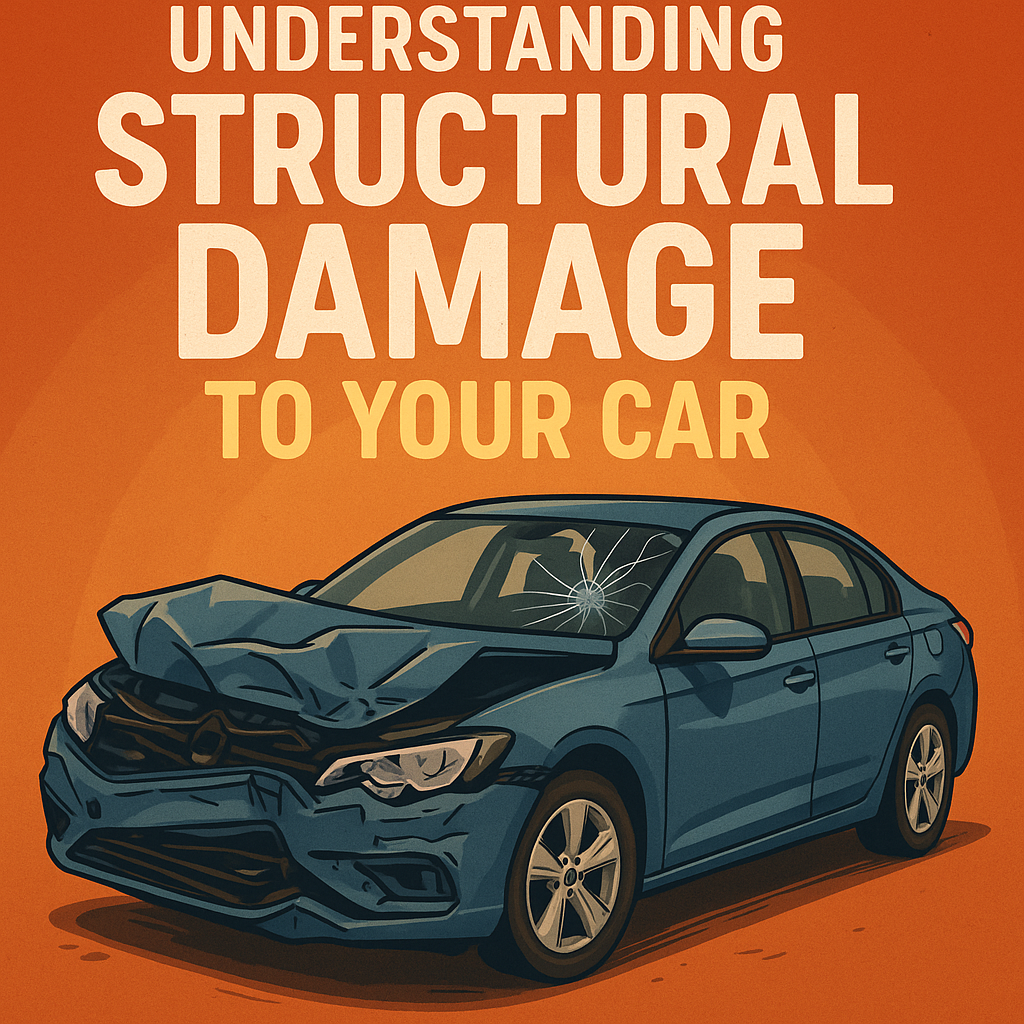
Car damage goes beyond just scratches and dents. When the frame or core parts take a hit, it’s called structural damage. This kind of harm can impact your safety, your car’s value, and how it drives every day. Knowing what structural damage means and how to handle it helps you make smarter decisions if your vehicle ever gets hurt. Let’s break down everything you need to know about structural damage on cars in clear, simple terms.
After a collision, it’s easy to focus on the visible things—the scratched paint, the dented bumper. But what about the damage you can't see? The most serious threat to your vehicle's safety and value is often hidden in its core: the frame. This is called structural damage, and understanding it is the first step to making a smart decision about your repair.
At Auto Magic Collision, we've seen it all. Here’s a straightforward guide to help you understand what structural damage is, how to spot it, and what it means for you and your car.
Think of your car's structure as its skeleton. It's the high-strength steel frame or unibody that’s designed to hold everything together and, most importantly, protect you during a crash. Structural damage is any harm to this skeleton that weakens its integrity. This is different from cosmetic damage, which is just harm to the "skin" of the car, like a dented door panel.
You’ll hear both terms, and they are closely related. Frame damage is a specific type of structural damage. On older trucks, the body and frame are separate. On most modern cars, the "unibody" construction means the frame and the body are one integrated piece. In this case, damage to critical support pillars, the floor pan, or crumple zones is also considered structural damage.
Looking for the most up-to-date guide?
We've created a newer, more comprehensive article on this topic.
Click here to read our simple guide to spotting hidden structural damage.
5 Telltale Signs of Hidden Structural Damage
You don't need to be an expert to spot potential warning signs. If you notice any of these after an incident, it's time for a professional inspection:
Uneven Gaps in Doors and Panels: Look at the lines around your doors, hood, and trunk. Are the gaps wider on one side than the other? Do the doors not close as smoothly as they used to? This is a classic sign the frame is slightly twisted.
The Car Pulls to One Side: If you're driving on a straight road and the car consistently drifts left or right, it could be more than just an alignment issue. A damaged frame can throw off your entire suspension geometry.
Unusual Noises: Do you hear creaking, groaning, or squeaking sounds when you turn or go over bumps? These noises can come from weakened or stressed parts of the frame.
Misaligned Wheels: Look at your car from the front or back. Do the wheels appear tilted in or out at the top? This is called camber, and if it's off, it can point to damage in the suspension mounting points on the frame.
Visible Bends or Kinks: Get down and look underneath your car with a flashlight. Check the two long steel beams (frame rails) that run the length of the vehicle. If you see any bends, kinks, or cracks, that is definite structural damage.
One of the biggest concerns for any car owner is the cost. Structural damage affects your wallet in two ways:
Repair Costs: Fixing structural damage requires specialized hydraulic machinery and expert technicians. It is more complex and costly than cosmetic repairs.
Devaluation: A vehicle with a history of structural damage, even if professionally repaired, can lose 20% or more of its resale value. A professional, well-documented repair is crucial to preserve as much value as possible.
If you are selling a car with a history of structural damage, you must disclose it. Honesty is key, and a complete repair record from a trusted shop can help reassure a potential buyer. If you are considering buying a car with past structural damage, it is absolutely essential to have a pre-purchase inspection done by an independent auto body expert to verify the quality of the repair.
Can all structural damage be fixed? Most structural damage can be professionally repaired using specialized equipment to pull a vehicle's frame back to its exact factory specifications. However, if the damage is too severe, an insurance company may declare the vehicle a total loss.
Is it safe to drive a car with structural damage? No, it is not recommended. A compromised frame will not protect you properly in another accident and can make the vehicle's handling unpredictable.
How do I know for sure if my car has structural damage? The only way to know for certain is with a professional assessment. At Auto Magic Collision, we use precise measuring systems to diagnose the extent of the damage and give you a clear, honest plan for repair.
If you're worried about your vehicle's safety after an accident, don't leave it to chance. Contact us today for a comprehensive post-collision inspection.
For any additional questions regarding the company our our services, feel free to contact us For any additional questions regarding the company our our services,